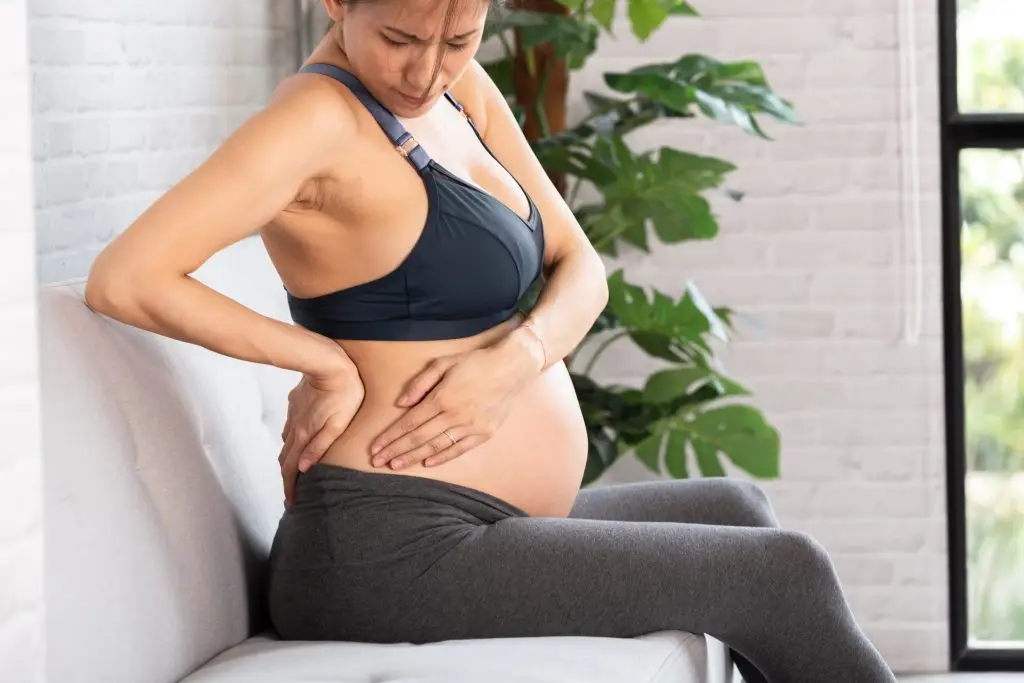Pregnancy is a life-changing experience, bringing with it immense joy, wonder, and a little person to love. However, this transformational period also introduces a number of physical changes that can cause discomfort, one of the most common being hip pain.
And because taking medication to alleviate the pain may not be recommended or permitted, non-medicated solutions become much more important. That’s where physical therapy can help.
Causes for hip pain during pregnancy
Understanding why your hips might be hurting during pregnancy is the first step toward finding relief. Below are the most common culprits behind that persistent ache or sharp twinge.
Sciatica
Many people who are pregnant experience pain due to sciatic nerve compression, known as sciatica. The sciatic nerve runs from the lower back all the way down each leg, and as your baby grows, the uterus and surrounding tissues can increase the internal pressure in the hips and pelvis, which can affect this nerve. This might lead to pain or numbness down one or both legs, often felt at the back of the hip.
Postural changes
Pregnancy changes your center of gravity as your baby grows. Naturally, you compensate by changing your posture intentionally to find comfortable ways to walk, lie down, and sit. Your body may also be compensating in ways you’re not consciously aware of, which often results in increased pressure on the muscles and joints of the hips. These changes can create muscle imbalances and lead to discomfort or pain.
Loosened joints and hormonal changes
During pregnancy, your body produces a hormone called relaxin. This hormone helps prepare your pelvis for childbirth by loosening the joints and ligaments in the area. While this increased flexibility is critical for delivery, the instability it can cause often leads to hip pain, especially when combined with the added weight of pregnancy.
By understanding whether sciatica, postural misalignment, or hypermobile joints driven by relaxin are the source of your discomfort, you can better determine how to relieve hip pain during pregnancy effectively.
How to treat different types of hip pain during pregnancy
The good news is that hip pain during pregnancy doesn’t have to be something you simply grit your teeth through. Below, we’ll cover a variety of treatments—from non-medicated options to seeking professional support—that can significantly reduce your discomfort.
Over-the-counter pain relief
Some pain medications may help reduce hip pain, but always consult your doctor before taking any medication during pregnancy. Acetaminophen (Tylenol) is generally considered safe, though not everyone should assume it’s okay to take it as needed.
Since medication should only be a last resort, try non-medicated solutions first for a safe and sustainable approach.
Use the RICE method
The RICE method (Rest, Ice, Compression, Elevation) is an effective and drug-free approach to pain relief.
- Rest when the pain flares up to allow your joints and muscles to recover.
- Ice the affected area for 15–20 minutes to reduce inflammation.
- Light compression with a pregnancy-safe band can provide additional support for your hips if possible.
- When possible, elevating your legs can help improve circulation and reduce swelling, easing strain on your hips.
Try gentle stretches and physical therapy
Stretching can help alleviate tension and improve mobility, particularly in the hip flexors and surrounding muscles. Pre-natal yoga is a great option, focusing on poses specifically designed for pregnancy.
If the pain persists, a physical therapist specializing in pregnancy care is your best option. They can guide you on how to adapt your posture and movement patterns to alleviate tension on the hips and lower back. For example, they can teach you how to move in ways that distribute your weight more evenly, reducing pressure on sensitive areas.
Adjust your posture and body mechanics
Proper posture is vital during pregnancy, as poor alignment can compound hip pain. Keep these tips in mind to protect your hips and back:
- Avoid standing or sitting in one position for too long.
- Support your lower back with a cushion when sitting.
- Wear supportive, flat-soled shoes to maintain proper alignment.
- Use a pregnancy pillow during sleep to keep your hips aligned. Position the pillow between your knees to reduce stress on your pelvis.
Small changes in how you sit, stand, and sleep can make a big difference in how you feel throughout the day.
Build strength safely
Staying active during pregnancy is one of the best ways to ease discomfort. Low-impact exercises, like swimming or using a stationary bike, can strengthen the muscles that support your hips without jarring movements. Walking regularly at a gentle pace is another great option.
Working with a physical therapist to develop a safe, guided exercise plan is an effective way to get strength-building exercises tailored to your body’s needs at each stage of pregnancy.
Find a physical therapist for pregnancy pain near you
If you’re in pain, you’re not alone, and you don’t have to suffer in silence. If you’re still wondering how to help hip pain during pregnancy, professional support may be the key. At Back in Motion, we specialize in pre- and postpartum physical therapy. Learn more about how we can help you stay healthy and move through this time with less pain by calling one of our clinics or by requesting an appointment online today.
